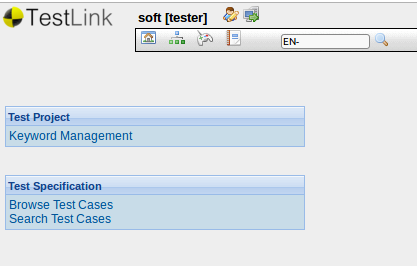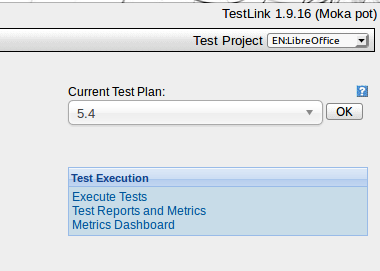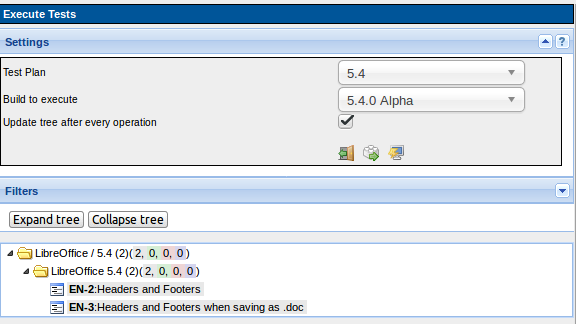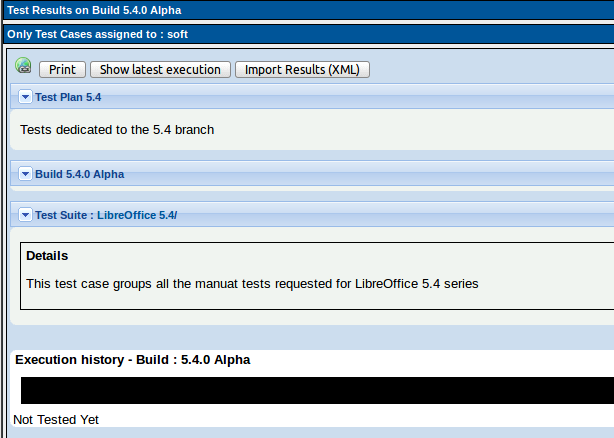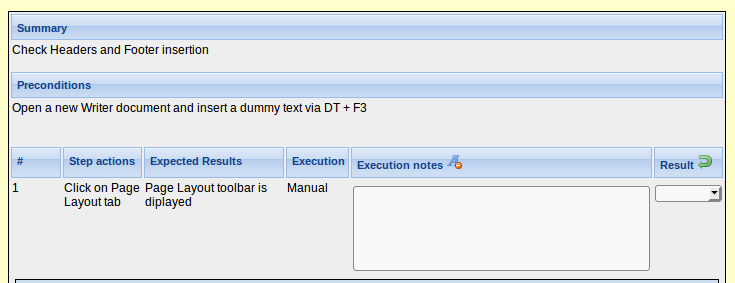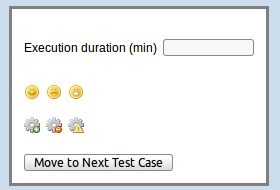TestLink/User Guide
TDF LibreOffice Document Liberation Project Community Blogs Weblate Nextcloud Redmine Ask LibreOffice Donate
User Guide
As a tester, you will have access to all test cases attributed to you during a Test Plan. A Test Plan corresponds to a full version like 5.3 and all its releases (5.3.0, 5.3.1, etc) and its milestones (like in 5.3.0.0 or 5.3.0.1, etc.).
Log in to our TestLink instance
Manage your profile
On the top left of the screen, near your login name, there is a My Settings icon that lets you manage your login, e-mail address and locale. By changing the locale, you'll change the user interface language. The workflow we are using will let you access the tests in the locale chosen here.
This is also the place where you can manage your password and reset it. Under the password area, a button let you generate an API key (it could be used to connect to other applications). And under this area, an history of your connection is listed.
Next to your login name, the role that have been attributed to you, appears between square brackets. Below is an explanation of the different possible roles.
Roles
Here is the list of the roles available:
- Guest: A guest only has the permission to view Test Cases, reports and metrics. He cannot modify anything.
- Tester: A tester has the permissions to see and run tests allocated to him/her.
- Test Designer: A designer can fully work (view and modify) on Test Specification and Requirements. He doesn't execute tests.
- Senior tester: An senior tester can view, create, edit, and delete Test Cases as well as execute them. Testers lack the permissions to manage Test Plans, Test Projects, create milestones, or assign rights. (initially Senior tester).
- Test Leader: A lead has the same permissions as a Tester but also gains the ability to manage Test Plans, assign rights, create milestones, and manage keywords.
- Administrator: An admin has all possible permissions (leader plus the ability to manage Test Projects and users)
We will describe the Tester, Senior tester and Test leader environments. The other roles will be described in the Administrator guide.
Tester
The interface will reflect the test execution environment if you are logged in as a tester. Your login name appears on the top left, followed by your role as described above. The screenshot shows you the different areas you can access when clicking on the Desktop icon. The Desktop list all the available functionalities for your role.
When you click on the Execute Tests link, here is what appears on the left:
The numbers following the name of the build are respectively the number of tests (2 in our exemple), then the number of tests not yet run, on a green background the number of passed tests, on a red background the number of failed tests and on a blue background the number of blocked tests. For the moment, only 0s are shown because no tests have been run.
Then, on the right part of the screen, when you click on one of the test displayed on the left, different information are shown on the top:
This part of the screen shows which version/build/milestone is tested. It also displays if there are already tests run on it and if they are successful or not and by whom the tests have been run. Then follows the test in itself, each step of the test is numbered and you can see the actions description followed by the expected result. The field called Execution Notes let you add some notes about the step of the test. Then, in the drop down list in the Result area, you pick if the step was passed, failed or blocked.
Once all the steps of the test executed, at the bottom of the screen, there is a field where you can leave your comments about the test and its steps. And on the right, you'll find the following screen:
Click on one of the smiley depending on the result (passed, failed, blocked) or on one of the icons below to save the state of the test and move to next one. And you're done with this one!
Once you have run all the tests that have been attributed to you, you'll be able to see different reports of your work under the Test Reports and Metrics link and Metrics Dashboard.
